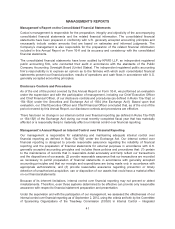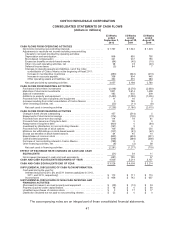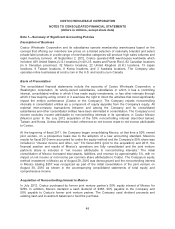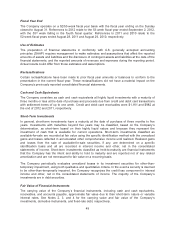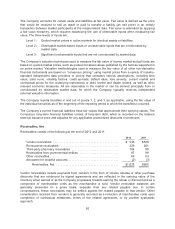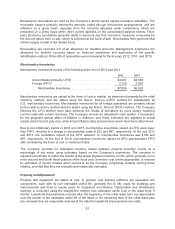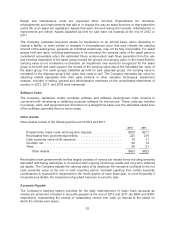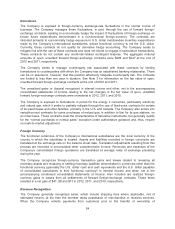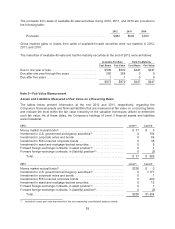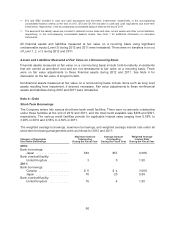Costco 2012 Annual Report Download - page 53
Download and view the complete annual report
Please find page 53 of the 2012 Costco annual report below. You can navigate through the pages in the report by either clicking on the pages listed below, or by using the keyword search tool below to find specific information within the annual report.
Reinsurance receivables are held by the Company’s wholly-owned captive insurance subsidiary. The
receivable balance primarily represents amounts ceded through reinsurance arrangements, and are
reflected on a gross basis, separate from the amounts assumed under reinsurance, which are
presented on a gross basis within other current liabilities on the consolidated balance sheets. Third-
party pharmacy receivables generally relate to amounts due from members’ insurance companies for
the amount above their co-pay, which is collected at the point-of-sale. Receivables from governmental
entities largely consist of tax related items.
Receivables are recorded net of an allowance for doubtful accounts. Management determines the
allowance for doubtful accounts based on historical experience and application of the specific
identification method. Write-offs of receivables were immaterial for fiscal years 2012, 2011, and 2010.
Merchandise Inventories
Merchandise inventories consist of the following at the end of 2012 and 2011:
2012 2011
United States (primarily LIFO) ......................... $4,967 $4,548
Foreign (FIFO) ..................................... 2,129 2,090
Merchandise Inventories ......................... $7,096 $6,638
Merchandise inventories are valued at the lower of cost or market, as determined primarily by the retail
inventory method, and are stated using the last-in, first-out (LIFO) method for substantially all
U.S. merchandise inventories. Merchandise inventories for all foreign operations are primarily valued
by the retail inventory method and are stated using the first-in, first-out (FIFO) method. The Company
believes the LIFO method more fairly presents the results of operations by more closely matching
current costs with current revenues. The Company records an adjustment each quarter, if necessary,
for the projected annual effect of inflation or deflation, and these estimates are adjusted to actual
results determined at year-end, when actual inflation rates and inventory levels have been determined.
Due to net inflationary trends in 2012 and 2011, merchandise inventories valued at LIFO were lower
than FIFO, resulting in a charge to merchandise costs of $21 and $87, respectively. At the end 2012
and 2011, the cumulative impact of the LIFO valuation on merchandise inventories was $108 and
$87, respectively. At the end of 2010, merchandise inventories valued at LIFO approximated FIFO
after considering the lower of cost or market principle.
The Company provides for estimated inventory losses between physical inventory counts as a
percentage of net sales, using estimates based on the Company’s experience. The provision is
adjusted periodically to reflect the results of the actual physical inventory counts, which generally occur
in the second and fourth fiscal quarters of the fiscal year. Inventory cost, where appropriate, is reduced
by estimates of vendor rebates when earned or as the Company progresses towards earning those
rebates, provided that they are probable and reasonably estimable.
Property and Equipment
Property and equipment are stated at cost. In general, new building additions are separated into
components, each with its own estimated useful life, generally five to fifty years for buildings and
improvements and three to twenty years for equipment and fixtures. Depreciation and amortization
expense is computed using the straight-line method over estimated useful lives or the lease term, if
shorter. Leasehold improvements incurred after the beginning of the initial lease term are depreciated
over the shorter of the estimated useful life of the asset or the remaining term of the initial lease plus
any renewals that are reasonably assured at the date the leasehold improvements are made.
51


